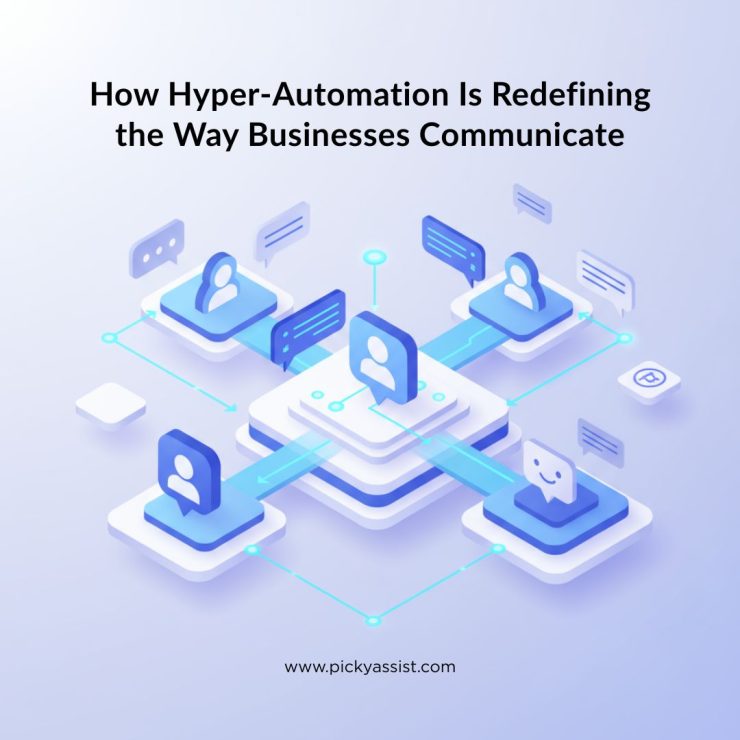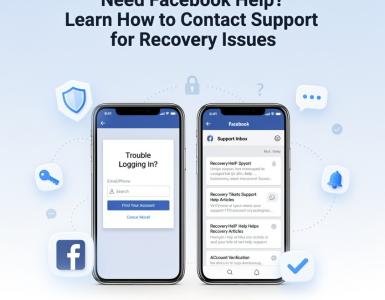You might already know that customers expect instant, accurate, and personalized support—24/7. Businesses can no longer depend solely on human teams to meet this demand. That’s where customer service automation is shaping the next wave of transformation. As hyper-automation merges AI, machine learning, and workflow intelligence, it’s redefining how brands connect, resolve issues, and build relationships at scale.
The Rise of Hyper-Automation in Customer Interactions
Gartner predicts that by 2026, over 60% of service organizations will deploy AI-driven automation to improve operational efficiency. This shift isn’t just about cost-saving. It’s about creating smarter, self-learning systems that understand customer intent and act instantly.
Platforms like Picky Assist exemplify this change by offering an all-in-one platform where chatbots, workflows, and communication channels work together seamlessly. Through automation, companies can reduce manual ticket handling by up to 50% while improving first-response times dramatically.
Why Customer Service Automation Is a Must for Modern Customer Experience?
Customer service automation enables brands to handle repetitive tasks like ticket creation, routing, and follow-ups, without human intervention. When implemented strategically, it ensures that agents spend more time solving complex issues rather than managing routine ones.
For example, the customer service software can integrate with CRM systems to auto-capture leads, update records, and personalize responses. Leading automated customer service systems even learn from every interaction to enhance future engagements.
Businesses that automate customer service often see a measurable improvement in CSAT scores and retention rates. In fact, studies suggest that automation can boost response efficiency by 30–40%, directly impacting customer loyalty.
Practical Applications: Real-World Customer Service Automation Examples
- Conversational AI Automation – Chatbots powered by NLP handle thousands of FAQs in seconds while maintaining a human-like tone.
- Help Desk Automation – Smart workflows auto-assign tickets to the right department, reducing resolution time.
- Automated Customer Relationship Management – Systems like Picky Assist sync communication systems across WhatsApp, ensuring no query slips through. Also with the Connector we could connect the platform with more than 3000 platforms including payment systems.
These customer service examples show how technology enhances communication consistency and brand reliability.
Integrating Customer Automation With Hyper-Automation Strategies
Effective automation strategies connect every stage of customer engagement, from first contact to post-purchase care. Customer automation isn’t just about handling queries; it’s about predicting needs, triggering proactive actions, and creating data-driven insights.
Through service automation in CRM, data flows seamlessly between marketing, sales, and support. CRM systems and workflow management platforms like Picky Assist allow teams to automate repetitive sequences, assign follow-ups, and personalize responses based on customer behavior patterns.
Call Center AI Automation and the New Era of Support
Traditional call centers are rapidly evolving. With call center AI automation, incoming calls can be routed based on sentiment analysis or voice recognition. This level of intelligence powers both automated customer service systems, where bots handle high-volume requests while human agents focus on empathy-driven tasks.
The result? A balanced model that combines machine precision with human understanding, a core advantage in customer service and support automation.
How Picky Assist Powers Intelligent Automation?
Picky Assist bridges communication and automation by integrating WhatsApp, Instagram, payment gateways, Zoho ecosystem and over 30 channels into one unified dashboard. Its Smart Replies use conversational AI to automate real-time responses, while workflow automation sequences guide the entire customer journey, from inquiry to conversion.
Help desk automation by Picky Assist’s flexible Whatsapp API architecture ensures scalability for businesses of any size. By blending automated customer service with CRM data, it creates a 360-degree view of each customer.
The Future Outlook: Intelligent, Predictive, and Human-Centric
The future of customer service automation lies in personalization at scale. As hyper-automation evolves, businesses will anticipate needs, deliver predictive support, and humanize digital conversations even further.
With platforms like Picky Assist, the automation journey isn’t just about efficiency, it’s about empathy powered by data. By embracing automation of customer service, brands can stay ahead of customer expectations and redefine what seamless communication truly means.
FAQs on Customer Service Automation
1. What is customer service automation?
Customer service automation uses technology, such as AI chatbots and automated workflow systems, to handle repetitive support tasks, streamline communication, and deliver instant responses without human intervention.
2. What are examples of customer service automation?
Common customer service automation examples include chatbots for customer queries, automated ticket routing, CRM integrations for lead follow-ups, and AI-driven sentiment analysis for personalized support.
3. How does customer service automation benefit businesses?
It improves speed, accuracy, and customer satisfaction while reducing operational costs. Automated systems like Picky Assist also unify communication, enabling data-driven insights and seamless multi-channel engagement.
4. What tools are best for customer service automation?
Top tools combine CRM, workflow automation, and AI chat features. Picky Assist stands out for integrating all these capabilities into one intuitive platform for automated customer support systems.







Add comment